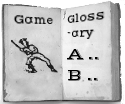Reversible Baseball
| Game | Reversible Baseball |
|---|---|
| Game Family | Baseball |
| Location | California |
| Regions | US |
| Eras | Post-1900 |
| Invented | Yes |
| Tags | |
| Description | "Reversible Baseball" debuted in 1928 when a U. of California baseball team coached by Carl Zamloch tried out a new variant of baseball. The game was "a field trial of Coach Carl Zamloch’s proposed revision to the rule books, what he called “reversible” baseball. What exactly was reversible (also sometimes referred to as “left-handed” or “ambidextrous”) baseball? Simply put, batters were given the option of running to either first or third base after putting the ball in play. Fielders were forced to take note of where the batter was going, and to adjust accordingly. If a batter chose to run to third base and reached safely, all offense in that half inning was reversed: other hitters in that frame would have to follow their teammate’s lead. For example, if the leadoff hitter singled and ran to third instead of first, the subsequent batter would need to run to third base on a single to left, and the runner might attempt to go from third to first on the play." According to the article, the innovation caused much comment, but attracted little interest. |
| Sources | Schoenholz, "Third Things First: Carl Zamloch and a Brief History of Reversible Baseball," SABR Research Journal, Spring 2021. See https://sabr.org/journal/article/third-things-first/ |
| Source Image | [[Image:|left|thumb]] |
| Comment | Edit with form to add a comment |
| Query | Edit with form to add a query |
| Has Supplemental Text |
Comments
<comments voting="Plus" />
